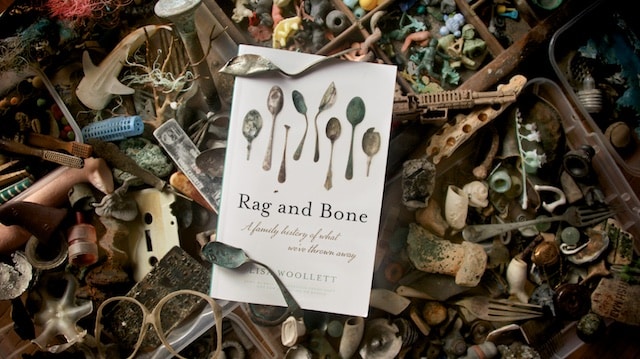Against strandline seaweed, the green of plastic plants catches the eye. Perhaps most poignant are those left high on shore after gales, particularly on deserted storm beaches. Here, over weeks and months, the beach scavengers do their work: poking gulls, sandhoppers and clouds of kelp flies. Eventually, as the last of the organic debris weathers and decays, just the plastic nature remains.

Over the two and a half years it took to write Rag and Bone, I filled several boxes with plastic plants from Cornish beaches. While some are generic, others are based on recognisable species. Sorting through them now, I find leaves from roses, privet and a cheese plant, and a lot of plastic topiary – the kind that hangs in balls from pubs and city restaurants. There is also a sprig of ‘faux lily of the valley’ (recommended for buttonholes and bridesmaid’s bouquets) and two frayed polyester peonies. According to one florist, as a symbol of both happy marriage and shame, these are ‘a good choice for communicating your regret over embarrassing yourself’.

Quite a bit of the greenery is seasonal: plastic holly and ivy leaves, perhaps from wreaths, Christmas cakes and Yule logs. I also have what I thought at first were the branch-ends of artificial Christmas trees, but that turned out to be plastic seaweed. It’s the kind that decorates fish tanks and I wonder how it reached the sea, imagining outgrown terrapins emptied into waterways, and dead or dying goldfish flushed down toilets.

In a separate tray – as I find so many – are the stems and button middles from Remembrance Day poppies. Produced since 1921, these were initially made from cloth with metal stems and middles. In 1967 these were replaced by plastic. Today’s black button middles are printed with the words POPPY APPEAL, yet those I find on beaches often say HAIG FUND. The change came in 1994, so although the paper petals disintegrated decades ago, these plastic middles have been in the marine environment for between 26 and 53 years.

How many times have they washed ashore, been buried in drifting sand and then washed back out during storms? On beaches, plastic plants and seaweed might be ignored by scavengers as obviously inedible, but at sea it breaks down more quickly. As sunlight and the action of waves reduce the size of those drifting fragments – to microplastics and eventually nanoplastics – it becomes easy for them to enter the food chain.
.

There is more on the ‘Travelling Museum of Finds’ here

and reviews of Rag and Bone (John Murray, June 2020) here


